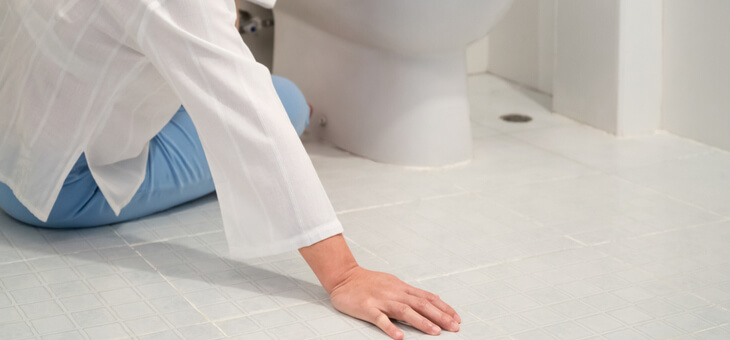People aged 65 and over are more likely to be seriously injured or worse due to a fall in comparison to other age groups, according to the Australian Institute of Health and Welfare.
Recent data reveals seniors accounted for approximately 58 per cent of hospitalisations and 95 per cent of deaths due to unintentional falls per year.
Bathrooms are one of the most essential areas for caregivers to ensure proper safety measures are in place. Bathtub slips and falls requiring medical attention can be avoided by using a few expert recommended methods for making bathing at home safer for seniors.
Introducing bathroom safety
If you are looking after a senior or elderly loved one, keep in mind it’s essential to avoid overexertion. Individuals who are 65 and older may find tasks they used to consider simple become more challenging as they age and their energy levels drop. Getting in and out of the tub or getting up from the toilet can be quite strenuous.
Causes of unintentional falls:
- slippery surfaces and floors
- dizziness, poor balance or mobility issues
- fluctuating blood pressure
- cognitive impairment (such as dementia or Alzheimer’s disease).
Read: What to consider before a bathroom renovation
Remember to be mindful and respectful when introducing new bathroom safety measures. Getting used to a new bathroom routine can be difficult to adjust to at first, as seniors have spent their whole lives perfecting their bathing routines.
Five precautions for preventing serious injuries
You can help keep your loved one safe when bathing and showering at home by using these five bathroom precautions:
1. Go for open concept
Bathrooms are prone to many sharp ridges and corners surrounding hard surfaces. And navigating around slippery tubs and showers can be difficult – especially in tight spaces. Remove any other trip hazards to alleviate the fear of trips, falls or stumbles. Installing a walk-in bathtub or shower and a secure bathing seat or transfer bench is also recommended.
Read: Five fall prevention exercises researchers recommend
2. Set up non-slip surfaces
Apply non-slip decals on any areas prone to being slick and slippery – such as on the floor next to the tub or shower. Be sure to also place them in the shower or tub and other areas of the bathroom floor. Rugs are not recommended because they often slide or bundle up, making them easier to trip over.
3. Install grab bars
Grab bars can be securely mounted to the wall, or floor to ceiling, to offer stable support as needed. Opt for installing them beside the bathtub, shower and toilet to limit any possible risk of unintentional falls.
4. Keep items within reach
To avoid overexertion in the shower or bath, keep essential items at eye level. Use hooks and shelves to make items easier to grab when needed. And also keep toilet paper, fragrances, shampoo – anything frequently used – within sight to limit any lengthy struggles locating toiletries in the bathroom.
Read: Better balance equals fewer falls
5. Purchase medical jewellery
For an extra layer of peace for your loved one when you’re not around, you can use, for example, waterproof medical jewellery covered by the National Disability Insurance Scheme (NDIS). MyID medical alerts can be scanned by a QR code reader to display emergency medical information including a photo, vital medical conditions, personal details, emergency contacts, allergies, medications, doctors, specialists and more.
Final thoughts
If you’re more comfortable with medical supervision for those moments you can’t be home, you can consider hiring a professional home care provider.
Gareth Mahon is the co-founder and CEO of The CareSide, a home care and disability support provider with offices in Perth, Adelaide, Brisbane and Melbourne.
If you enjoy our content, don’t keep it to yourself. Share our free eNews with your friends and encourage them to sign up.

